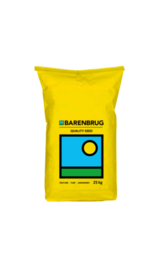Within the Brassicas family, turnips are the quickest species to establish. Turnips have the potential of being grazed multiple times. The first grazing however, will be the most important one. Both sheep and cattle can graze turnips. It is important not to graze too large of an area at once. Strip-grazing prevents both yield and quality losses due to trampling and polluting. It is also important not to overfeed the cattle when they are allowed to graze the turnips at first. Extremely high intake of turnips (and other brassicas) can cause animal health problems. Therefore, cattle should be allowed to adjust to the change of diet. Supplementing with other forages that contain less protein and sugars can prevent problems.
Barkant is a truly improved forage turnip variety. Bred for leaf production, it out yields most other turnip varieties available. A very vigorous diploid turnip variety with a purple tankard root, Barkant turnips have a high bulb yield, and good top growth. A high sugar content provides winter-hardiness and increased palatability.
Planting and establishment
Barkant requires good soil drainage and a pH of between 5.3 and 7.5. Seed should be planted in a firm, moist, seedbed. Barkant can be broadcasted or drilled. It is very important not to plant the seed too deep. Brassicas should be planted no longer than 2 consecutive years to prevent disease and pest problems. Ideally planted from October to November.
Seeding rate
• 3-5kg/ha (increased leaf production, medium to large bulb size)
• 2-3kg/ha (increased bulb size)



